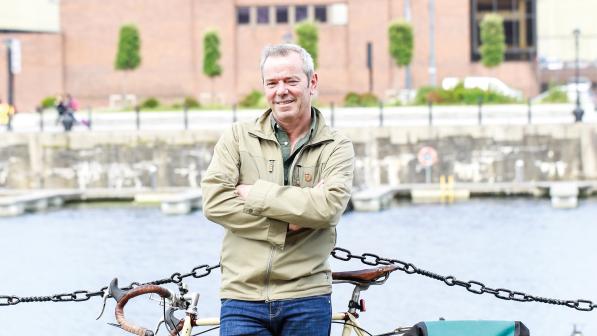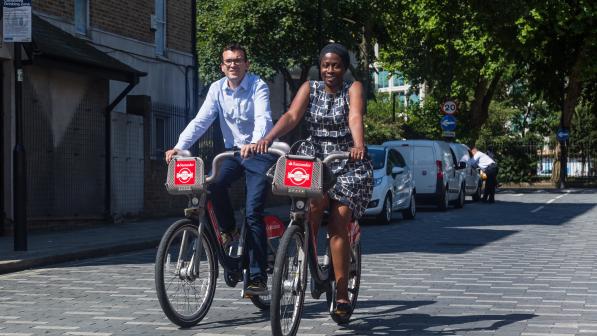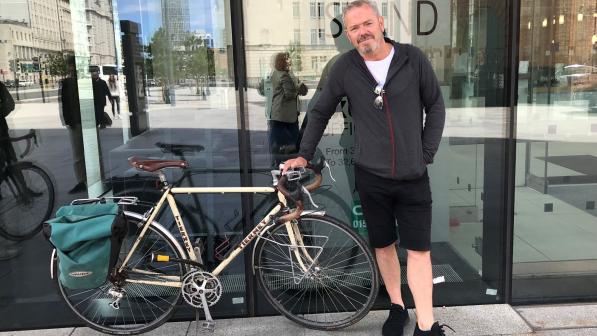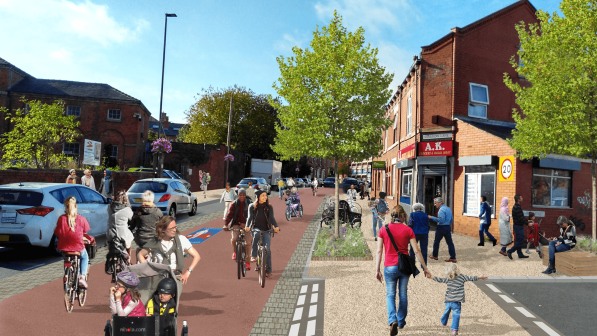Opinion: Sarah Storey on her first nine months as active travel commissioner

I last wrote for Cycling UK at the end a busy first week in office and over the past nine months the momentum has certainly been maintained, if not always in the public domain.
During my first three months, the priority was meeting local authority leaders across Greater Manchester, riding the existing and developing network and maintaining regular contact with the transport commissioner, Vernon Everitt, while he worked on the developing plan for bus franchising.
Greater Manchester covers a large area of north-west England, comprising 10 metropolitan boroughs. This includes towns such as Bolton, Bury and Wigan, plus cities like Manchester and Salford. It has a combined population of 2.8 million.
As such, a key part of my role is creating the strategy that will enable Greater Manchester to build a London-style public transport system, where the active travel infrastructure links seamlessly to public transport routes. It’s been important to ensure that walking and wheeling access is of the highest priority within the plans that local authorities are making for the schemes they are building in the region.
Local authorities are the highways authorities within their districts, which means the people elected are the decision-makers on which roads are added to the pipeline of schemes for building infrastructure. To support this, I set the region-wide, multi-strand strategy and direct the focus.
Upholding and improving standards, seeking solutions when issues are detected and ensuring the various strands of the strategy are complementary and work towards the overall ambitions of the mayor and local authority leaders are all significant.
Within Greater Manchester there are several long-term strategies that link into active travel. The obvious connection is to the 2040 Transport Strategy, but also the 2038 Net Zero target and the Greater Manchester Strategy, which was launched when my position was announced.
These documents were a key driver for how I developed Refresh the Mission for active travel which was the second phase of my work from July through to October. The leader meetings, first-hand experience being out and about on the network and meeting with other key stakeholders, helped formulate the three sections of the Refresh the Mission for Active Travel document, which I launched in Wigan on 1 November.
Building foundations
I set out three foundations which would be the overarching principles of how to approach any work being done on active travel. These were: accessibility, enabling Behaviour Change, and Communication being transparent and timely.
During my travels, meetings and stakeholder interactions, it became clear that the region needed a renewed focus on the accessibility of active travel. The concept of universal accessibility goes beyond the initial ‘double buggy and competent 12-year-old test’ which had launched the Bee Network in 2018.
Insisting on universal accessibility has better synergies to the Equalities Act 2010 and reflects the success story of the original plan, in attracting people from all walks of life to the benefits of active travel. Strengthening the Bee Network to always be ahead of what is the expected minimum has been a vital part of this.
Just as important has been developing a focus on future proofing the network, so that it continues to work for greater numbers of people walking, wheeling and cycling as time goes on.
Following on from the three foundations, I gave greater detail to five priority areas that support the ambition of a connected network; infrastructure delivery, road danger reduction, cycle hire and access to cycles, home to school travel and integration with public transport. Each priority is fairly self-explanatory, but the headlines of delivery and road danger reduction present key target areas if the other three priorities are going to be achieved.
The 2021 census showed that car ownership across Greater Manchester has risen and while some of that can be attributed to the dire state of the railways across the north, some of the responsibility must rest with a lack of safe space for alternative modes. Greater Manchester is not alone in trying to rebalance the streets in favour of healthier travel modes, and there has never been a more crucial time to do this faster as everyone is looking for cheaper ways to travel during a cost-of-living crisis.
Part of the 2040 Transport Strategy for Greater Manchester states a target called the Right Mix, where by 2040 the number of vehicle journeys made by car will be down to 50%, with the other 50% to be made up of sustainable modes, such as walking, wheeling, cycling or public transport. There’s also a question as to whether this target – established prior to the pandemic – is ambitious enough so I will continue to ensure the region is heading for success in achieving this target.
In order to achieve mode shift, people need to feel safer and so reducing road danger must provide a two-pronged approach alongside the delivery of infrastructure. To provide context, 60% of journeys are currently in cars, with fewer than 2% of journeys cycled.
The final part of the document is dedicated to 10 recommendations that will enable the region to move forward with the active travel section of the Bee Network. In February I provided an update on these, sharing where progress was already being made and highlighting the areas for further attention and a speedy resolution to be found.
The most progress has been made working with the police, where reducing the threat of harm and tackling anti-social behaviour behind the wheel is a key area of focus
So far, the most progress has been made working with the police, where reducing the threat of harm and tackling anti-social behaviour behind the wheel is a key area of focus. But there is still a great deal of work to be done if the region is going to be in a position to formally adopt Vision Zero.
Working with others
It’s fair to say that my role has an incredibly wide reach in terms of the people I get to meet and work with. So far this year, I have opened cycle storage facilities at two primary schools in Tameside, before meeting the leader and key executive staff at the local authority head quarters. I also had meetings with the Road Danger Reduction Advisory Board and have regular catch ups with the police and other commissioners on issues connecting to road danger.
I regularly talk to many different people on the challenges of the active travel network, which in February included the Radio Manchester In the Hot Seat programme, with Mayor Andy Burnham. Aside from this I’m working with locally elected members in all districts and preparing for public meetings, such as the Greater Manchester Active Travel Sub Committee and Greater Manchester Transport Committee.
I’ve also filmed with a local museum for a piece about sustainable transport and appeared at the Greater Manchester Moving conference.
Everything has the common topic of promoting the themes set out in Refresh the Mission, but ensuring the styles of communication are adjusted for each of the different audiences. Internally, the work has been focused on overseeing the bid process for the latest round of active travel funding and keeping updated on the various reports that are being worked on.
Over the next couple of months, I’ll be focused on spearheading the strategy needed for each of the five priorities to gain tangible progress. Bus franchising is progressing and the active travel programme must always be agile enough to respond to any potential gaps in provision.
I will continue to work collaboratively with the elected members across each district to deliver suitable infrastructure that balances the needs of all modes and makes utilising the Bee Network a more attractive proposition to driving every journey.




